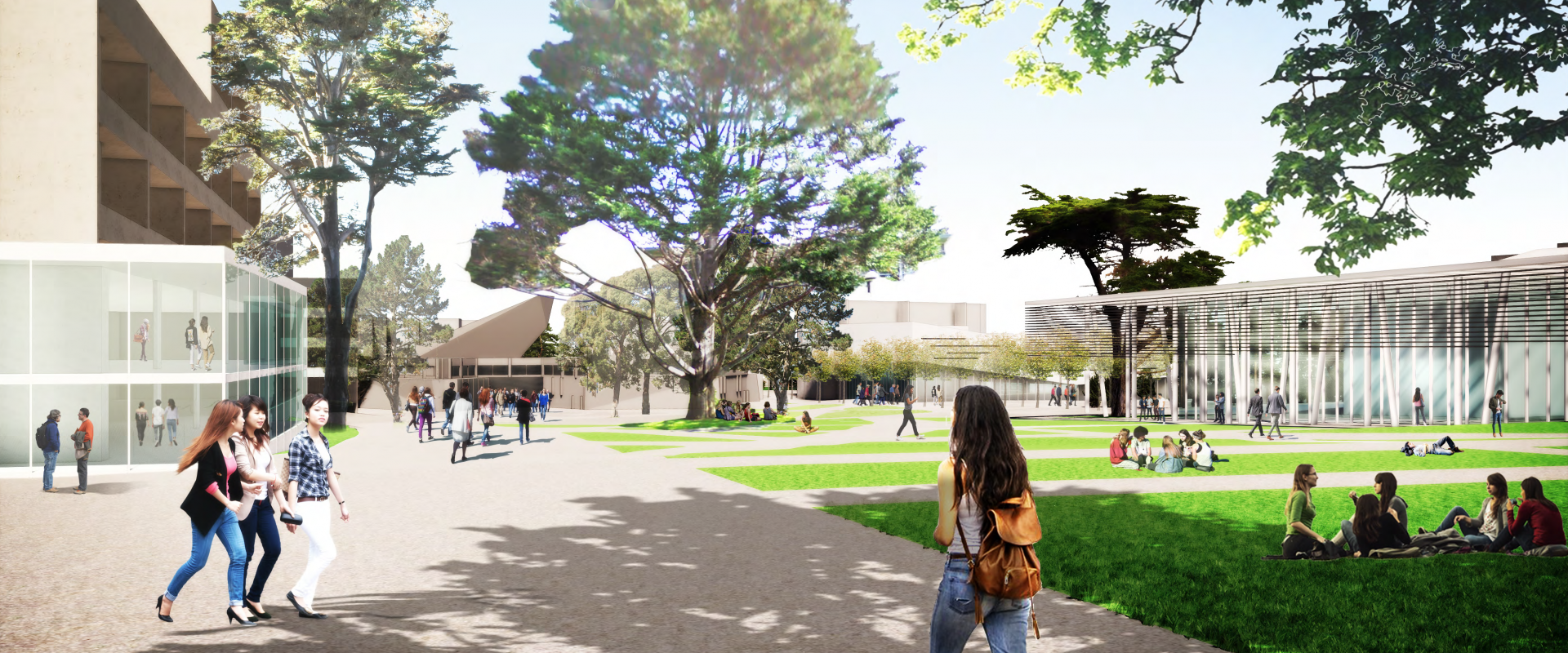An Intermediate Plan
Due to current circumstances and the altered prospects for higher education campuses, SF State will be downsizing the near and midterm goals for the master plan. While the long-term vision remains, this intermediate plan will chart the course of campus development for the next ten to fifteen years. There are many questions to be answered about enrollment, housing and residential life, academic learning environments, and workplace, to name a few. In the coming months, we will engage the campus community in setting the goals for this plan.
THE DRAFT REPORT
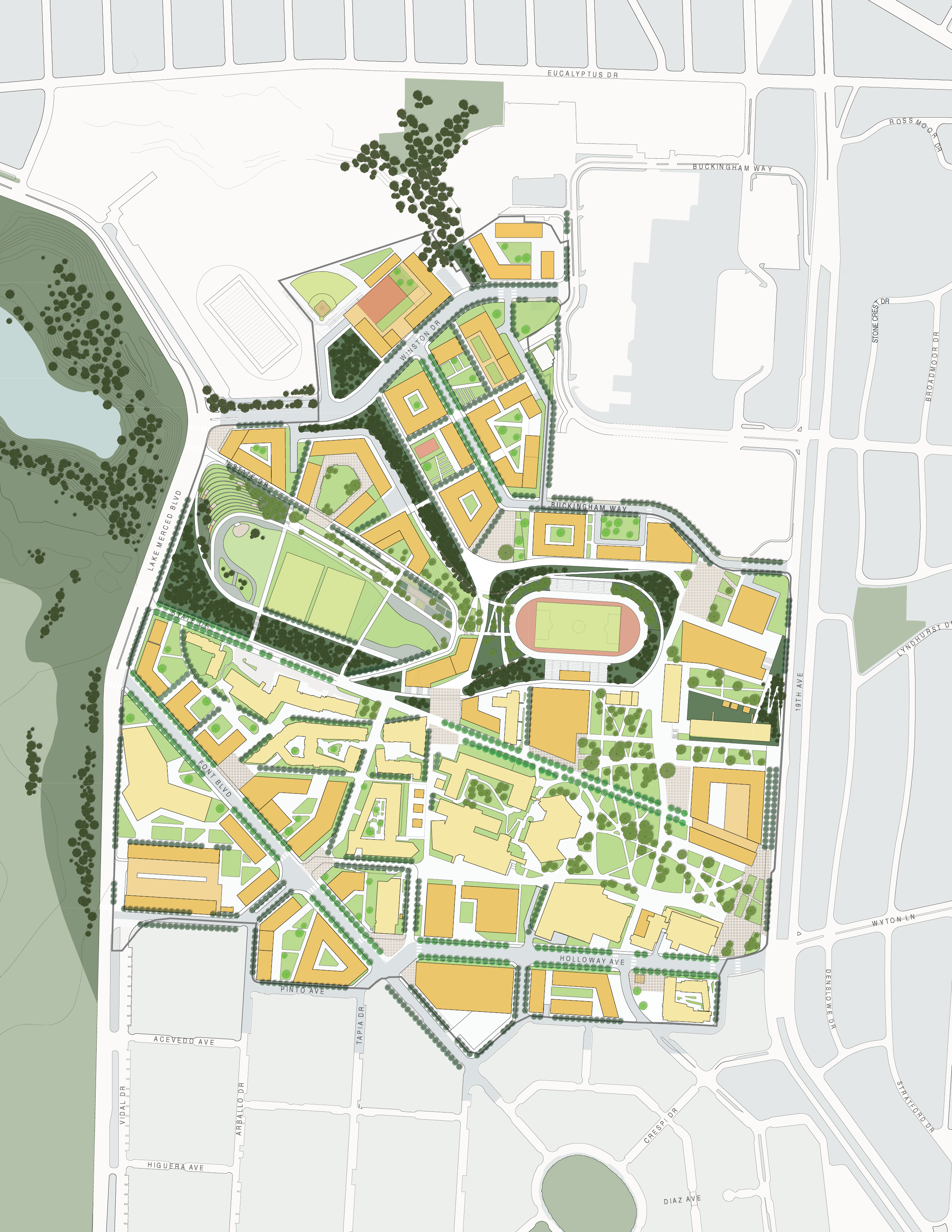
FutureState 2035 Illustrative Plan
San Francisco State University stands at a critical point. Capital needs are escalating just as state funding for higher education declines. The University upholds inclusion even as the City of San Francisco becomes less diverse. Students experience high rates of homelessness and food insecurity in one of the wealthiest regions in the country, with Bay Area cities some of the least affordable in the US.
See how we aspire to enhance academic connections by reflecting and supporting a diversity of experience, integrate with our neighboring communities, and become the City's University.
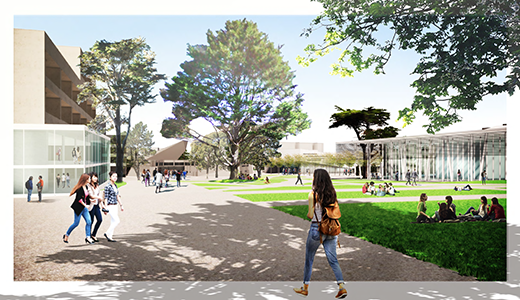
Illustration of an expansive main entry plaza at 19th Avenue, which connects to an eastern extension of the Quad. Additional new open space extends the Quad north, serving as a connection to Cox Stadium and a focal point for new shared facilities.
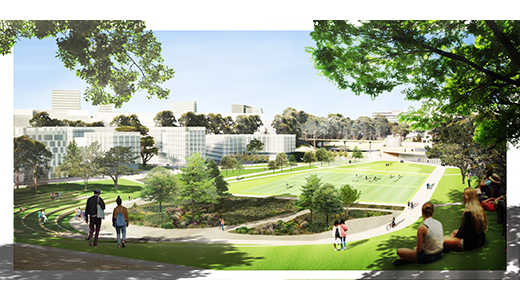
Illustration of the restored valley with recreational areas and central bioretention facility that celebrates stormwater, ecology, and sustainability. New student housing communities front the valley on both sides.

E/W section of quad, new welcome center, and transit connections

N/S section looking west at new student center and restored valley
COMMUNITY OUTREACH
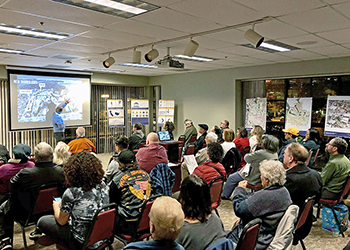
Throughout its history, San Francisco State University has placed a strong emphasis on being a good neighbor—and on academic programs and creative activities that are relevant to and yield lasting benefits for its neighborhoods.
In a letter to the community, the SF State President described our plan for the future, where we continue to embrace this vital role in shaping the vibrant culture, economic growth, and civic fabric of San Francisco and the Bay Area. To that goal, we invited the community to join us for a series of town halls in early December 2018. At these community forums, we shared information about the draft plan, answered questions, and listened to comments and suggestions.
The community outreach forums below have occurred. Please stay tuned for updates about future meetings.
Time: 5:00 p.m. to 8:00 p.m.
Place: SF State Towers Conference Center, Presidio Room on State Drive
Visitor and Travel Information
Campus Map
Time: 7:00 p.m. to 9:00 p.m.
Place: Junipero Serra Playground and Clubhouse (300 Stonecrest Dr., San Francisco, CA 94132)
Time: 1:00 p.m. to 3:00 p.m.
Place: J. Paul Leonard Library, Events Room (LIB 121) on Holloway Avenue
Visitor and Travel Information
Campus Map
Informational item.
Time: 1:00pm
Place: Commission Chambers, Room 400, City Hall, 1 Dr. Carlton B. Goodlett Place
MAKING THE PLAN
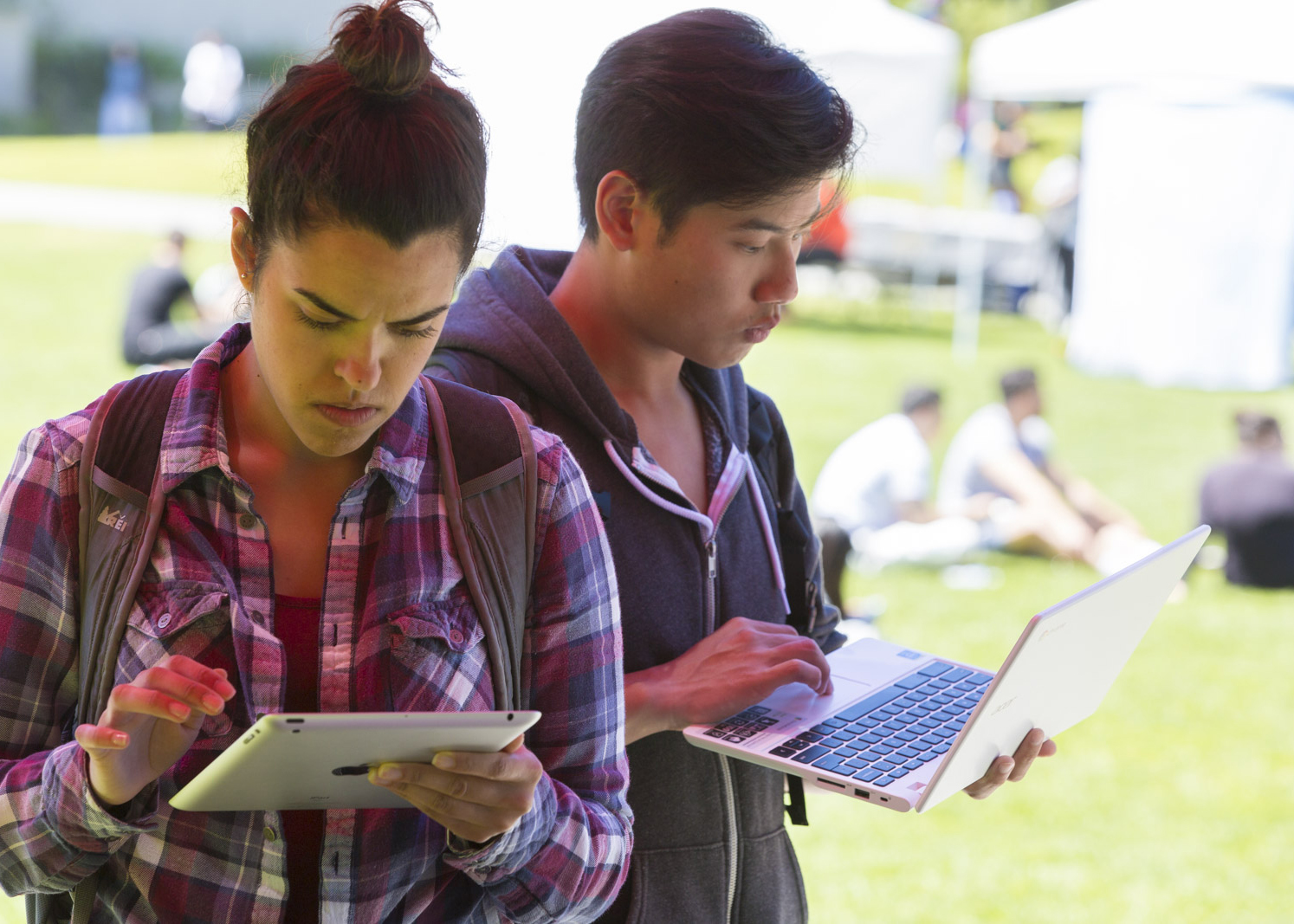
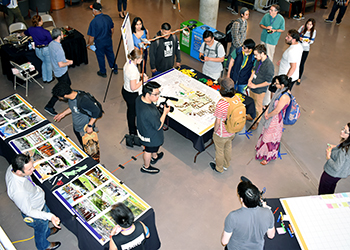
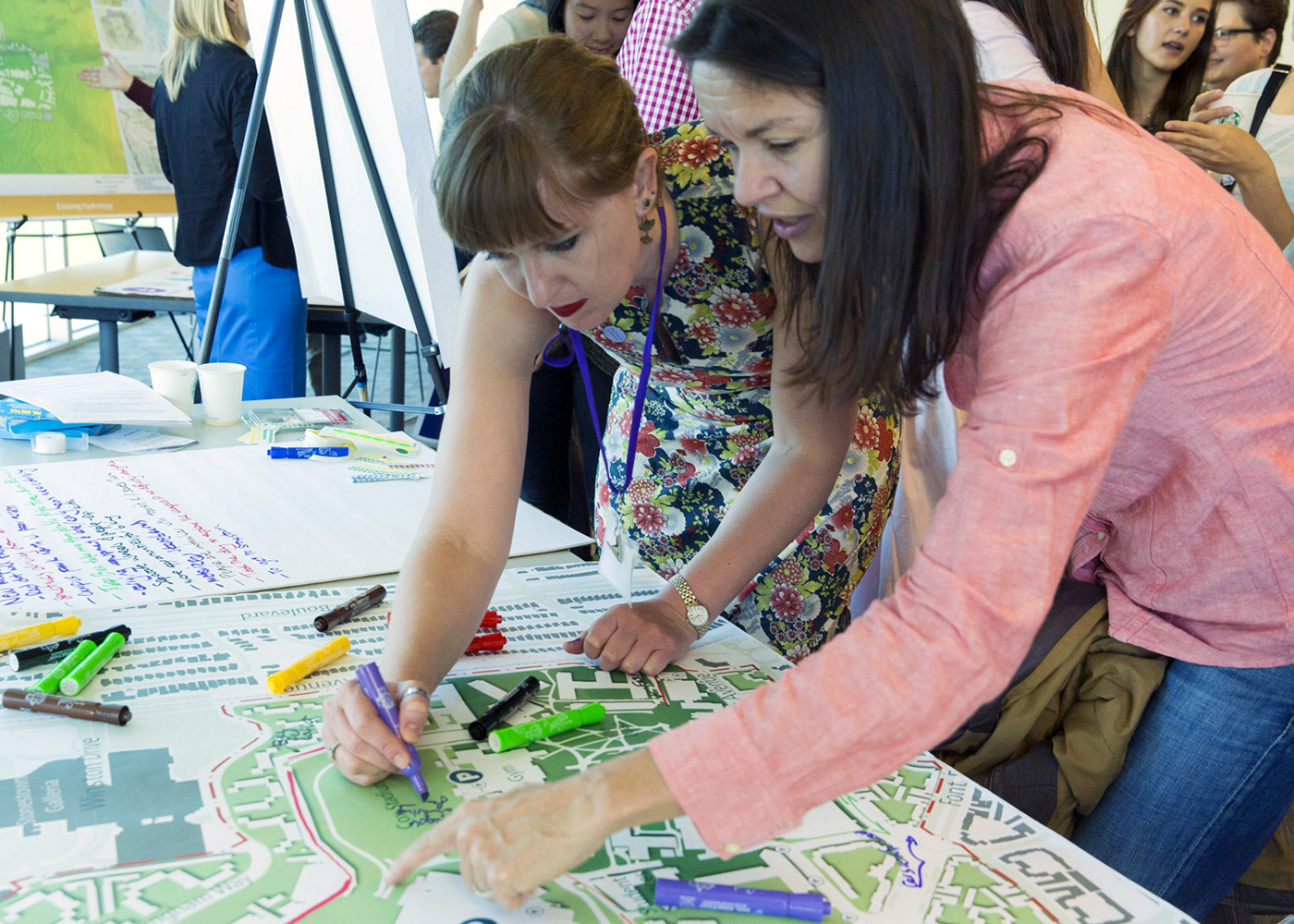
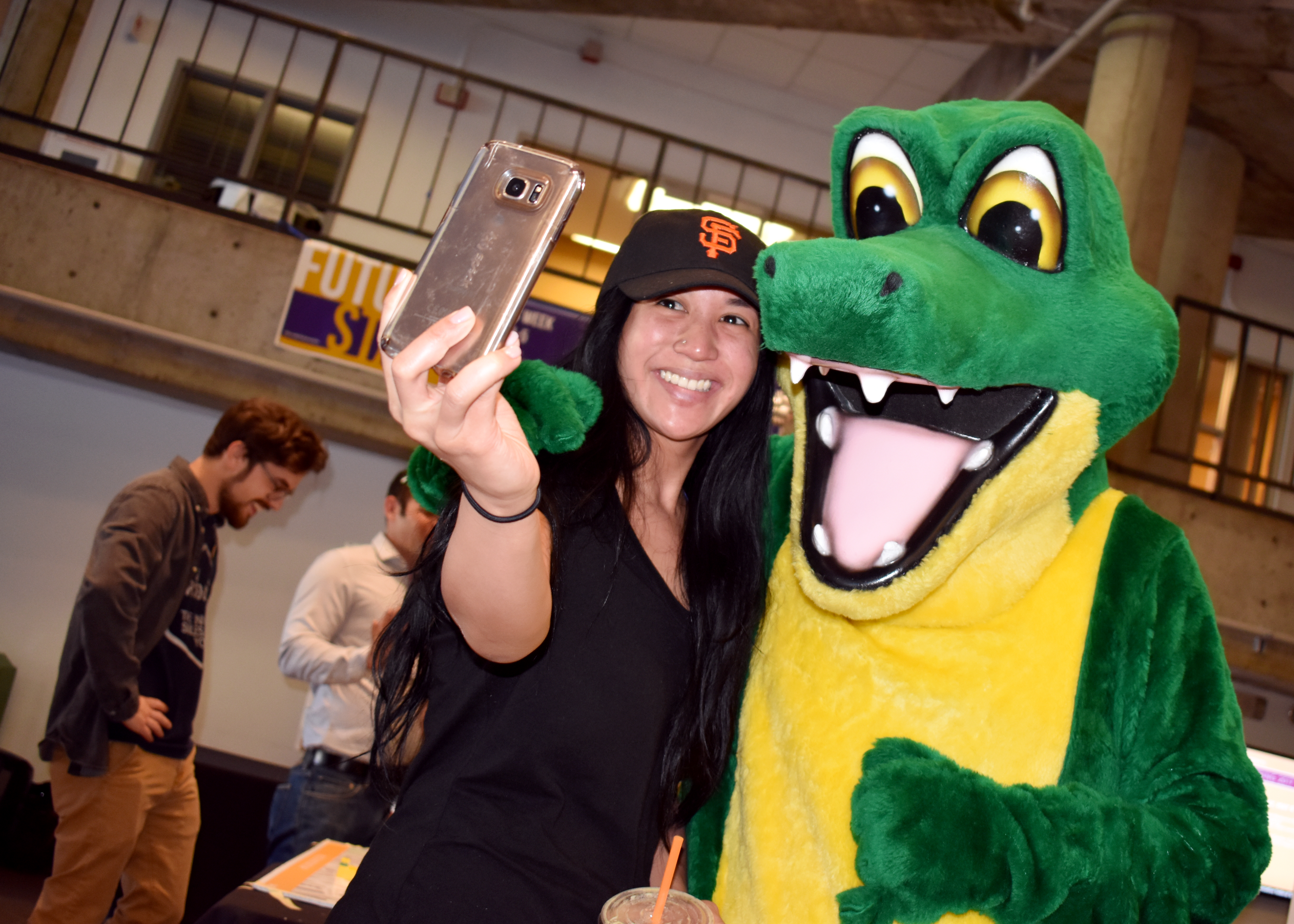
For more than 100 years, San Francisco State University has played a pivotal role in shaping our city and the Bay Area. Today, our campus serves nearly 30,000 full-time, and part-time students. Under the campus master plan update, San Francisco State balances smart growth with increased campus housing and improved transit, as well as resilient and sustainable operations.
FutureState 2035 represents 14 months of interactive planning. It is shaped by feedback from more than 5,000 individual students, faculty, staff, neighbors, and staff from government agencies, and supported by professionals in master planning, architecture, transportation, and green infrastructure.
Representatives from throughout the University met with the planning team throughout. From April 2017 through the summer of 2018, the planning team met with campus stakeholders. Nearly 30,000 interactions with the online surveys and website provided additional opportunities for dialogue with internal and external stakeholders about issues critical to the University’s long-term academic and student success.
Presentations to each college and the library enabled informal coordination and information exchange. The President’s Cabinet met with the planning team to review work at key milestones. Ideas Week, an open house in May 2017, engaged in-person and online more than 2,700 students, faculty, staff, and administrators in brainstorming about the future of the campus and ways to translate University core values into physical terms. More than 1,000 persons completed the online survey.
High-Tech/High-Touch Engagement. The interactive “high-tech/high-touch” outreach strategy engaged community members who provided ideas and feedback through all phases of the planning process, setting the foundation for the physical plan and associated mobility and sustainable infrastructure elements. The team maintained a robust digital presence throughout, keeping contact with stakeholders and the public with online updates, social media posts, and email blasts, including meeting notices and copies of meeting presentations about the refined alternatives. Interactive “explore maps” of the alternative conceptual plans and campus districts, posted to the website, also highlighted existing and proposed destinations, and showed how community input shaped the recommended gathering places, campus housing, and academic concepts.
Initial concepts. A series of outreach activities engaged the campus community and SF State neighbors to confirm the campus vision and design approach. The planning team presented an analysis of online survey results and initial design concepts at an open house in July 2017, held additional interactive presentations during four FutureState2035 meetings in August 2017; and introduced preferred vision plan concepts at two open houses in September2017—one in the morning for the campus community and one in the evening for SF State neighbors. Drivers for the planning concept—campus entry and identity, student success, sustainability, and community partnerships—reflect the input.
Planning Concept. The SF State planning team met early with the City and County of San Francisco staff, inviting feedback from the San Francisco Planning Department, San Francisco Municipal Transportation Agency, and the San Francisco Municipal Public Utilities Commission in the fall of 2017 and the winter of 2018. The team briefed the staff of elected officials in the fall of 2017 and conducted an early scoping meeting with multiple city departments in the spring of 2018 before issuing a notice of preparation (NOP) for the environmental impact report (EIR). At an on-campus open house in May 2018, the community reviewed the planning concept. The project team reached out to friends and neighbors surrounding the University and met with neighborhood associations.
Explore the FutureState 2035 Interactive Website from 2017
Midway through the campus engagement process, the design team developed informational videos to share the primary goals of the plan. These were posted on the project website with a link to provide feedback.
Design Team
physical planning: SWA Group, HGA Architects, Neu Campus Planning
mobility and wayfinding: Arup
infrastructure: Sherwood Design Engineers, Integral Group
engagement: Crowdbrite
